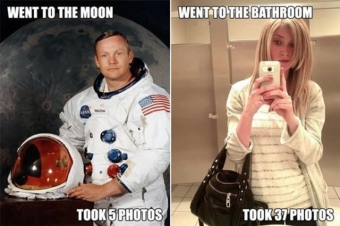 isual representation is the same as objectification.
isual representation is the same as objectification.
Or, it’s to say that you cannot visually represent something without objectifying it. The word “objectification” has unfortunately become part of an emotionally charged lexicon of jargon used in place of an actual argument. Under such use, the original meaning is typically lost. Yet such misuse offers a great opportunity for (re)discovery if one is actually willing to search for what these terms truly mean via any legitimate dictionary or thesaurus.
Here is what the word “Objectification” actually means:
![]()
[T]o present as an object, especially of sight, touch, or other physical sense;
[M]ake objective;
[Externalize]
![]()
The key here is the last term in the definition – externalize, or to “embody in an outward form.” Any type of representation of anything in any physical or external medium by default objectifies what is being represented in the first place.
Visual representation without objectification is impossible.
Any type of media, including movies, video games, books, magazines, television shows, advertisements, etc. are all objects, items, products. All of these are indeed things which were made to express, inform, or sell something. That is their purpose. Ergo, the only way to not objectify women (or anything for that matter) is to omit them completely. Is that what anyone wants? That does not seem like a realistic or viable option.
The problem most people have when making this argument is that what many really mean is sexual objectification. Objectification in itself is a very broad, vague term. It’s also a rather large and scary (i.e. emotionally charged) word, which may be why it lends itself to being such a popular “buzz word,” a way of scaring the politically correct into a sort of social submission.
Sexual objectification is certainly a better and more focused argument, if not for the mountains of evidence against it.
Consider that when most people speak of sexual objectification, they are mostly referring to any medium which represents women in a sexy or even sexually charged manner. The problem with this argument, ironically, is that women objectify themselves far more than anyone.
Again, please remember that visually representing something is in fact the same as objectifying that something.
What better way to visually express something than with a photo? How about with photos of oneself? On multiple websites? With/without clothes? Willingly? Consider things such as imgur, “self-shooters,” r/gonewild, Facebook, etc, etc.
Facebook is infamous for this, and is perhaps the ultimate display of female solipsism. Consider the following video, courtesy of All Time 10’s:
[Skip to 1:22 to save time]
Think about it; 300 million photos uploaded every day, and containing 4% of all the photos ever taken throughout history, the vast majority of which are young women photographing themselves in the nearest lavatory. At least a video game or advertisement or what not has an elicit purpose, with tangible products and rewards, but that’s an argument for another time.
Beyond that, I have to ask, what exactly is wrong with sexy things? People like sexy things, and such sentiments are expressed all throughout our culture, the things we do and make, even how we talk, act, and dress. It’s just a part of who we as human beings are. Sexy things are a large part of why art exists, why graphic design exists, why cool cars or awesome weapons or fancy décor exists. I suppose we could always just forgo things such as appreciation of art or beauty or sexy things, and live in an Equilibrium-esque dystopia, where efficiency and straightforwardness rules.
Joking aside, it’s interesting that people will claim to be sexually or socially open-minded, and then in the same breath lambast anything they deem sexually or socially “childish” or “wrong” or “improper.” I could go on about the hypocrisy of “movements” such as FEMEN or the “SlutWalks,” but I’ve had enough with the tangents.




Pingback: First Article is Up | Black Heron Ink
Pingback: The Navy and Kinect: “Stopping Sexual Assault” | Black Heron Ink
Pingback: Black Heron Ink
Pingback: Nostalgia and the Video Game Industry – Part 1: The Consumer | Black Heron Ink
Pingback: Faith or No Faith: Nintendo Wii-U, Struggling Sales, and Improving Morale | Black Heron Ink